The AMD Radeon R9 Nano Review: The Power of Size
by Ryan Smith on September 10, 2015 8:00 AM ESTOverclocking
Finally, no review of a high-end video card would be complete without a look at overclocking performance.
Of all of the Fiji cards overclocking the R9 Nano is perhaps the easiest and certainly the most unusual. Due to the fact that the card is essentially a 1000MHz Fiji card with a heavy power throttle, the card is already validated for clockspeeds that under load it doesn’t have the available power to reach. As a result while one can crank up the clockspeeds, the card isn’t going to move until you increase the power limit. And even then you are more likely to hit the power cap again than you are to break 1000MHz sustained. So overclocking the GPU is something of an academic affair.
| Radeon R9 Fury/Nano Series Overclocking | |||||
| Ref. R9 Fury X | ASUS R9 Fury | Ref. R9 Nano | |||
| Boost Clock | 1125MHz | 1075MHz | 1075MHz | ||
| Memory Clock | 1Gbps (500MHz DDR) | 1.1Gbps (550MHz DDR) | 1.1Gbps (550MHz DDR) | ||
| Power Limit | 100% | 115% | 135% | ||
| Max Voltage | 1.212v | 1.169v | 1.2v | ||
Overall we were able to overclock our sample to 1075MHz on the GPU and 550MHz (1.1Gbps) on the memory. However load clockspeeds were almost always under 1000MHz even with a generous 35% increase in the power target. Overdrive does allow for a larger increase – up to 50% – but with the R9 Nano featuring a less robust power delivery system designed to push less power than R9 Fury or R9 Fury X, we’re hesitant to increase the limit further without a better idea of what the card can safely sustain for extended periods of time.
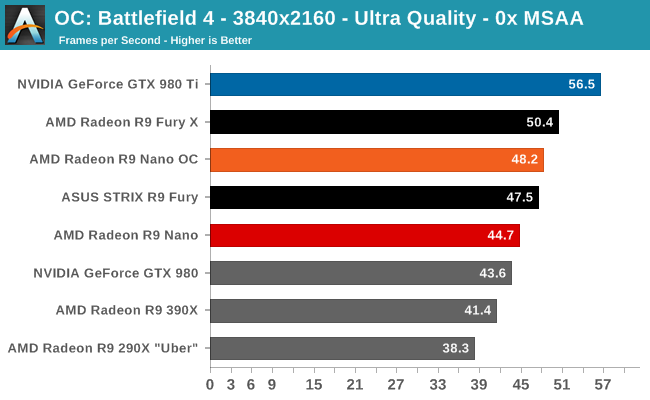

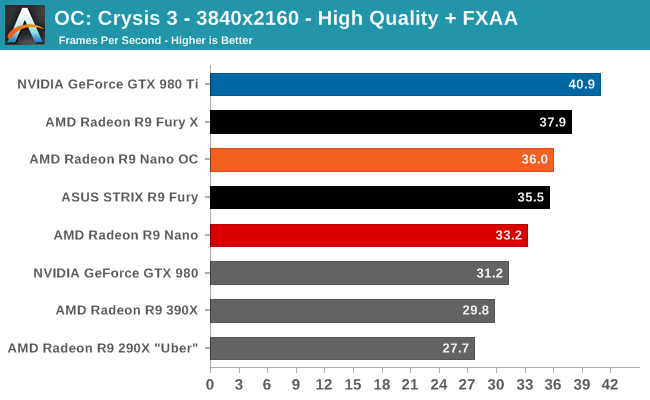
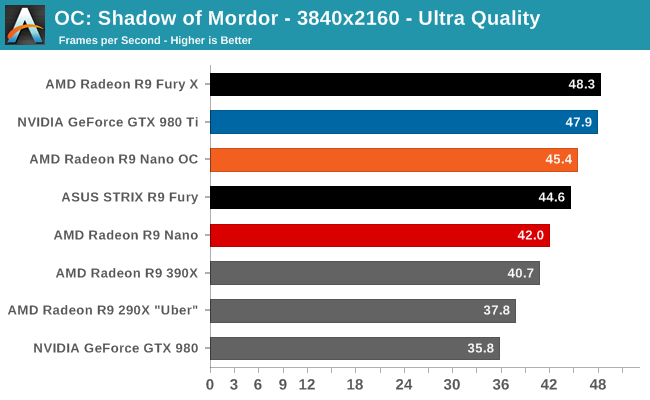
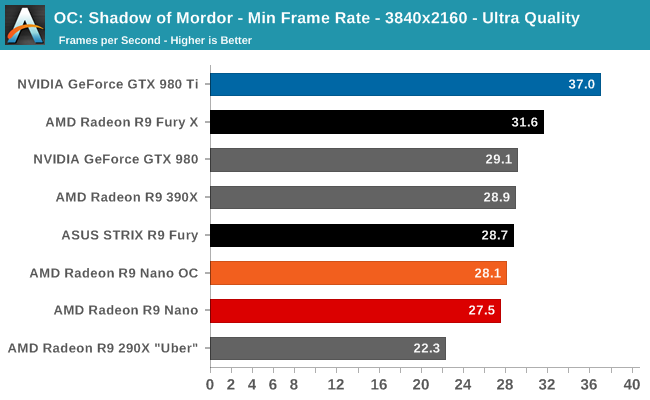
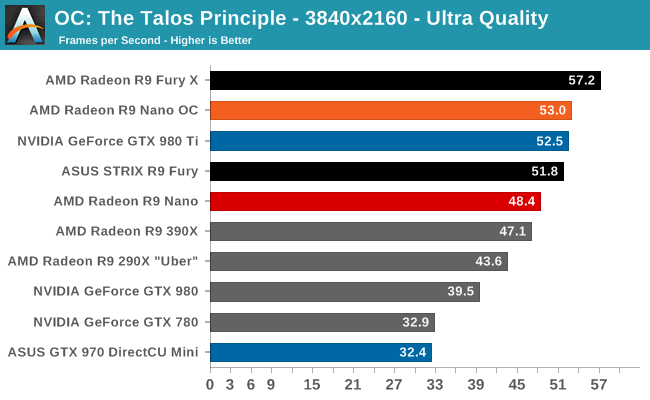
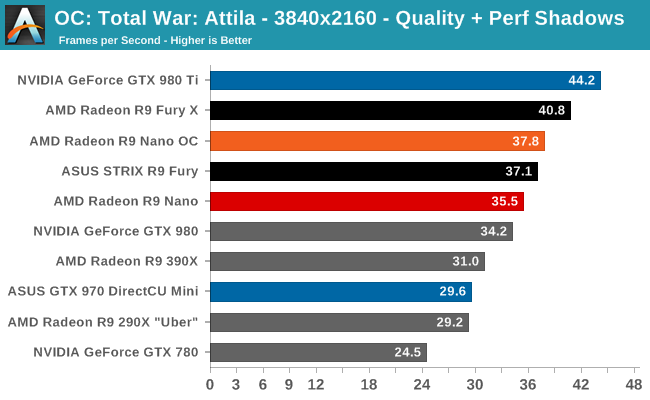
The overall performance gains from overclocking aren’t huge, but at 7-10% they also aren’t too shabby. However since higher clockspeeds quickly ramp up the power requirements due to the higher voltages required, the performance gains won’t be anywhere near the 35% increase in the power limit, despite that we are in fact still power limited.
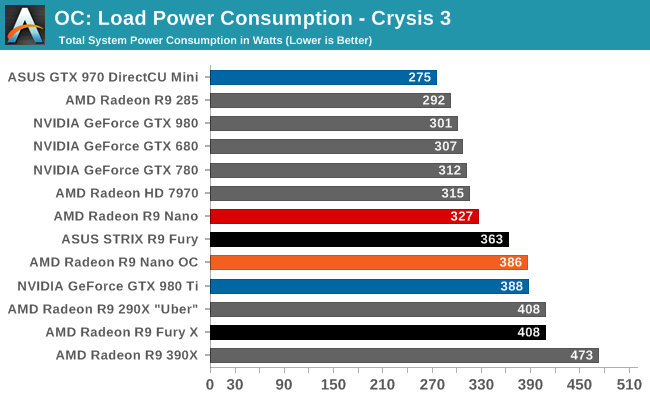
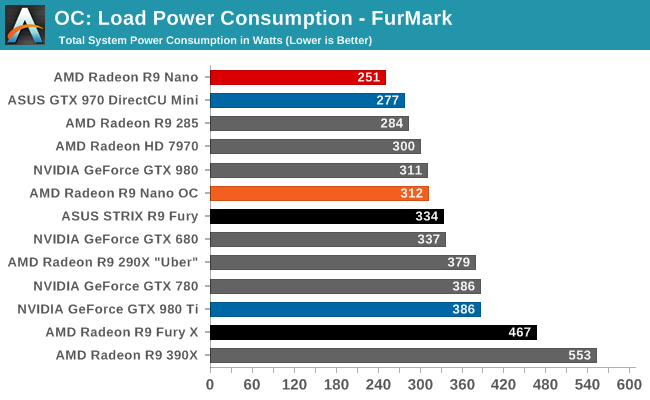
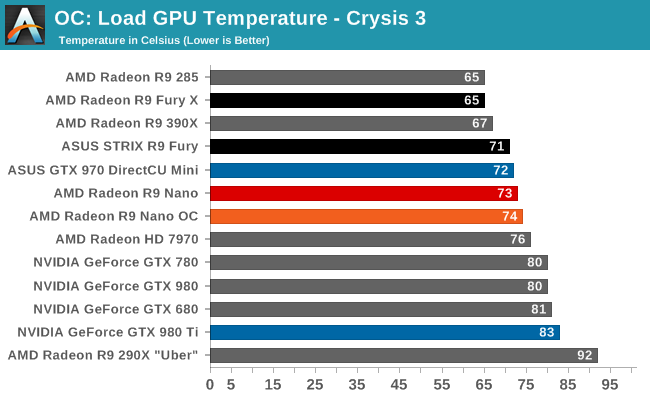
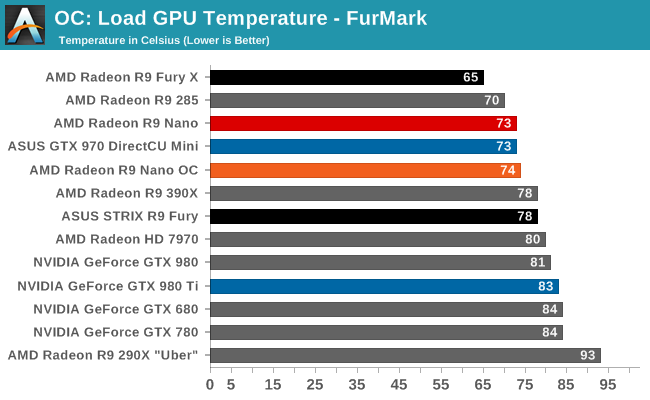
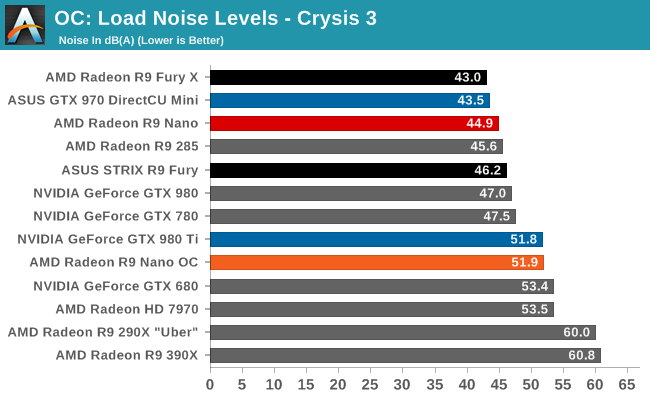
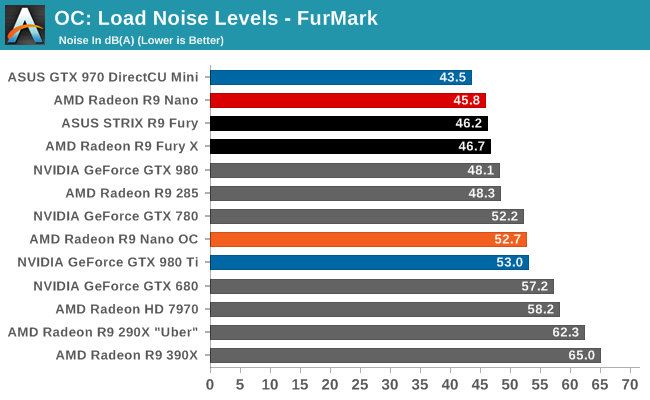
Meanwhile the 35% increase in the power limit has a definite knock-on effect on the cooling system. The R9 Nano’s cooler is able to keep up with the additional load, holding temperatures to 74C, but noise levels are now over 51dB(A). Power consumption at the wall is similarly affected, with the R9 Nano essentially giving up all of its energy efficiency gains in the process.










284 Comments
View All Comments
Kutark - Wednesday, September 30, 2015 - link
I can only wish LAN parties were still a thing. Some of my fondest memories was playing aliens vs predator, or CoD2/Quake/UT/etc.FMinus - Friday, October 2, 2015 - link
I'll be honest here, performance vs. price wise this is kind of meh, but the form factor is absolutely amazing. I just wish most cards would be trimmed down to that form factor, it is clearly doable as demonstrated here, maybe not right now, but the future is open. While they're at it, they might start looking at how to make those cards single slot again, that would be my wet dream.vhawkxi - Tuesday, May 17, 2016 - link
A great compact card - Installed it on my Intel 4GHz i7-6700K CPU based machine and for what I do with it, it is super. I am not a first-person-shooter fan - for RPG type of games (Myst, Riven) and music production with Avid programs it is more than adequate. Worth the $700 CAD I paid for it.Rehmanpa - Monday, August 8, 2016 - link
Mind I ask how you guys got your 980 ti to render on Sony vegas pro? I can't get mine to render and I wad hoping you could share how you guys got yours to work. Thanks.